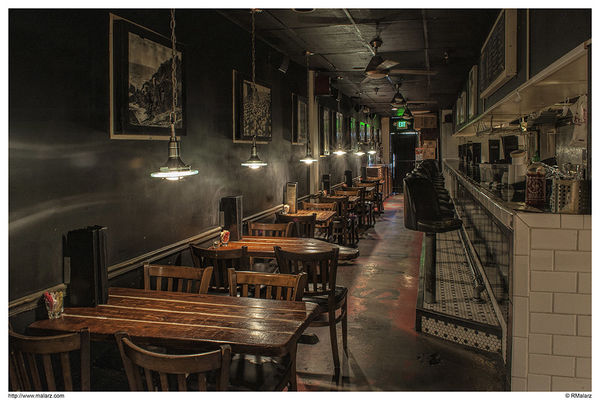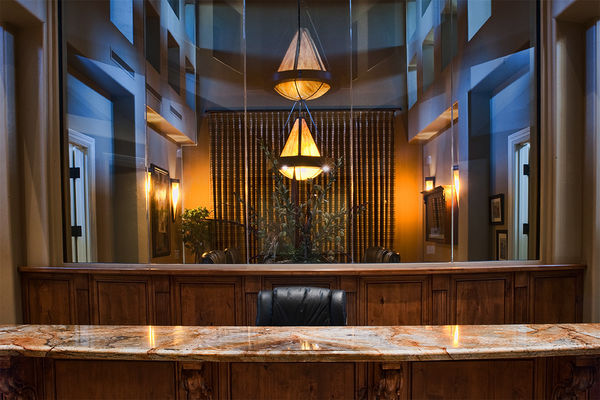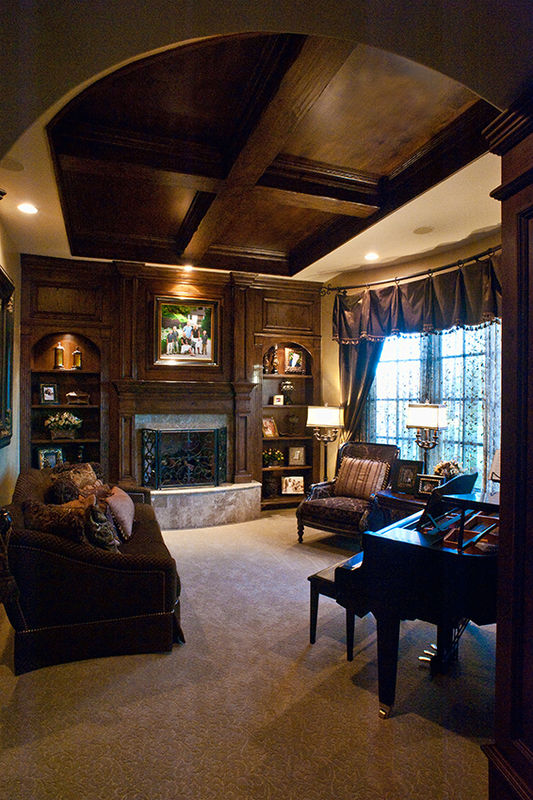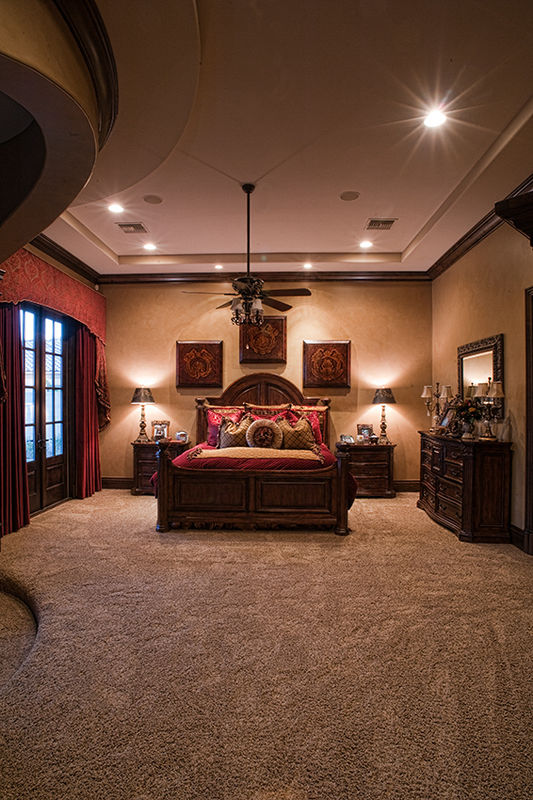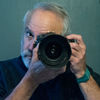Real estate lens
Oct 28, 2016 09:43:51 #
Davet wrote:
I am new to shooting some real estate for a realtor friend of mine. What would you recommend for the best lens or lens's to use for this? I have a Nikon d300 but soon moving to a full frame.
I found exterior shots came out best at 28mm lens setting. I used to use a Zeiss lens on a Contax 35 mm camera body. I was a commercial/investment real estate broker for 25 years and retired before I started with DSLR camera body.
Oct 28, 2016 10:01:32 #
A wide angle should do very well and the assortment of them is plentiful. I use a Nikon 12-24 f4 AF-S which also allows me to use it at focal lengths between 16 and 24mm with my full frame camera.
Tokina is also manufacturing some excellent wide angle zooms.
Tokina is also manufacturing some excellent wide angle zooms.
Oct 28, 2016 10:24:11 #
Dave, I used a full frame camera with a combination of 20mm and 28~85mm.
--Bob
--Bob
Davet wrote:
I am new to shooting some real estate for a realtor friend of mine. What would you recommend for the best lens or lens's to use for this? I have a Nikon d300 but soon moving to a full frame.
Oct 28, 2016 11:13:05 #
Davet wrote:
I am new to shooting some real estate for a realtor friend of mine. What would you recommend for the best lens or lens's to use for this? I have a Nikon d300 but soon moving to a full frame.
On full frame, a 14-24mm f/2.8 zoom.
On APS-C, a 10-20mm or 10-22mm zoom.
On Micro 4/3, a 7-14mm f/4 or f/2.8 zoom.
Nikon 14-24mm f/2.8G ED-IF AF-S Zoom Nikkor Lens is around $1600 Refurbished.
Oct 28, 2016 11:34:03 #
Dave34
Loc: Maricopa, AZ
Most realtors need to learn how to use a wider lens. While we were looking for a house, I found most real estate pictures look more like a furniture catalog.
Oct 28, 2016 11:42:58 #
mtrunz
Loc: Wheatfield, NY
whitewolfowner wrote:
For a full frame camera, the Nikon 14-24mm f2.8 lens is the ultimate one to use but is also almost 2 grand new.
I use the Nikon 14-24 f2.8 with a D800 for all of my interior shots. I highly recommend this lens. I shoot my own listing photos and when I'm not too busy I'll take jobs for other agents who want professional photos. I bought mine on ebay with the original invoice for less than half the cost of new. It wasn't even a year old and was hardly used by the original owner. Keep an eye out and you'll likely find a bargain if you're patient. Don't forget a good editing software like Adobe Lightroom to get the best end results. Great pictures do sell homes!
Oct 28, 2016 11:48:43 #
Davet wrote:
I am new to shooting some real estate for a realtor friend of mine. What would you recommend for the best lens or lens's to use for this? I have a Nikon d300 but soon moving to a full frame.
For real estate photos indoors, I'd use a 10mm or 10-22 mm lens for interior images, and 24-70mm for outside. If you have both, you're golden. If you have a full frame camera, use a 16mm lens or a zoom of 16-35mm and the same 24-70mm for outdoor pics.
Oct 28, 2016 12:05:32 #
Mac wrote:
Nikon just announced a new lens, the Nikon PC NIKKOR 19mm f/4E ED Tilt-Shift Lens that is supposed to be ideal for architecture and real estate photography.
I would get two since they are so reasonably priced
 @ $3,399.95
@ $3,399.95Oct 28, 2016 12:08:39 #
Oct 28, 2016 12:17:28 #
Davet wrote:
I am new to shooting some real estate for a realtor friend of mine. What would you recommend for the best lens or lens's to use for this? I have a Nikon d300 but soon moving to a full frame.
A tilt shift lens is not really necessary, because you can straighten out all the verticals in simple post processing. You need a wide angle at 20mm, if you are shooting ff. or 16 if crop format. And probably a bit wider for outdoor shots of the property. If you were going to be doing this full time as a pro, it would be worth investing in a wider lens, but for just occasional architectural shots a 16 - 80 zoom should work for you.
Oct 28, 2016 12:20:59 #
I shoot a lot of architectural and real estate photography. I work with a Nikon D7100 and for interiors my Nikkor 10-24mm is my go to lens. It's coverage for tight spots is great, though you have to watch perspective and converging lines and almost always have to fix in post. Having a good tripod with bubble levels is key. Learning to use strobes is also key. Though more and more doing multiple exposures for HDR effects is becoming more and more acceptable to the industry.
Oct 28, 2016 12:53:40 #
Oct 28, 2016 13:22:30 #
Oct 28, 2016 15:07:58 #
On a tight budget you could use a Samyang 14mm 2.8 with a shift adapter on a Sony e-mount.......assuming you knew what you were doing.
Oct 28, 2016 15:22:15 #
amfoto1
Loc: San Jose, Calif. USA
Unless you need ultra high image quality and have "deep pockets", I suggest you look at third party lenses (Tamron, Sigma, Tokina).
Ultrawide Nikkors are few and tend to be very expensive. For example, the cheapest DX Nikkor is the 10-24mm costing about $900. The better quality 12-24/4 Nikkor costs around $1150.
In comparison, you can get a Tokina 11-20mm f2.8 or 12-28mm f4 or a Tamron 10-24mm for $450-$500. Sigma offers the widest available (aside from fisheye lenses), their 8-16mm for $700.
None of those are full frame/FX, so would only be usable on your current camera. If and when you "upgrade" to a full frame camera eventually you'd have to look at different lenses too...
Nikon 14-24mm f2.8... $1900, Nikon 16-35/4.... $1100, Nikon 18-35mm $700. Or...
Tokina 16-28/2.8... $700, Tokina 17-35/4... $450, Tamron 15-30/2.8... $1100, or the widest of the wide Sigma 12-24mm $950 or 12-24mm "Art" for $1600.
Alternatively, you could choose prime lenses, including some expensive but ideal-for-architecture "tilt-shift" (Nikon calls theirs "PC").
Or you could use a less wide lens (maybe with less perspective and other types of distortion... and perhaps something you already have), take multiple shots and stitch them together using panoramic techniques and software.
You also should ask yourself if you really need full frame. Most people actually don't. If you aren't making really big prints and/or shooting in exceptionally low light, a modern DX/APS-C camera may be all you really need. Those allow use of smaller, lighter, less expensive lenses, too. Of course you also can use FX lenses on a DX crop camera if wanted. But the other way around - DX lenses on an FX camera - is sort of a waste. It doesn't make a lot of sense to spend extra to get an FX camera for it's larger sensor, then use lenses that force a crop to resolutions smaller than many DX cameras offer! That's sort of counter-intuitive.
When shopping for ultrawide lenses such as the above, something to think about... do you want to be able to use filters? Some of the most extreme wide angle lenses have protruding, convex front elements that make it impossible to use standard filters. In some cases there are special holders for oversize square and rectangular filters... but those add substantial cost to your setup and take some extra care when using and storing them. So be sure to look closely at any lenses you might be considering, if you want to be able to use standard filters.
Another thing, ultrawide lenses with f2.8 apertures are bigger, heavier and more expensive, require larger filters and actually may not be as sharp from edge to edge.... and might not be necessary for interior shots that can be done on a tripod, with a longer exposure. Often an f4 lens is smaller, lighter, less expensive and can even be sharper with less distortions. Some of the above are variable aperture zooms, too. That means their aperture changes while zooming, which can be a bit of a nuisance if using manual lighting setups (but may not be any problem at all if using some form of TTL auto exposure or stopping the lens down anyway).
Ultrawide Nikkors are few and tend to be very expensive. For example, the cheapest DX Nikkor is the 10-24mm costing about $900. The better quality 12-24/4 Nikkor costs around $1150.
In comparison, you can get a Tokina 11-20mm f2.8 or 12-28mm f4 or a Tamron 10-24mm for $450-$500. Sigma offers the widest available (aside from fisheye lenses), their 8-16mm for $700.
None of those are full frame/FX, so would only be usable on your current camera. If and when you "upgrade" to a full frame camera eventually you'd have to look at different lenses too...
Nikon 14-24mm f2.8... $1900, Nikon 16-35/4.... $1100, Nikon 18-35mm $700. Or...
Tokina 16-28/2.8... $700, Tokina 17-35/4... $450, Tamron 15-30/2.8... $1100, or the widest of the wide Sigma 12-24mm $950 or 12-24mm "Art" for $1600.
Alternatively, you could choose prime lenses, including some expensive but ideal-for-architecture "tilt-shift" (Nikon calls theirs "PC").
Or you could use a less wide lens (maybe with less perspective and other types of distortion... and perhaps something you already have), take multiple shots and stitch them together using panoramic techniques and software.
You also should ask yourself if you really need full frame. Most people actually don't. If you aren't making really big prints and/or shooting in exceptionally low light, a modern DX/APS-C camera may be all you really need. Those allow use of smaller, lighter, less expensive lenses, too. Of course you also can use FX lenses on a DX crop camera if wanted. But the other way around - DX lenses on an FX camera - is sort of a waste. It doesn't make a lot of sense to spend extra to get an FX camera for it's larger sensor, then use lenses that force a crop to resolutions smaller than many DX cameras offer! That's sort of counter-intuitive.
When shopping for ultrawide lenses such as the above, something to think about... do you want to be able to use filters? Some of the most extreme wide angle lenses have protruding, convex front elements that make it impossible to use standard filters. In some cases there are special holders for oversize square and rectangular filters... but those add substantial cost to your setup and take some extra care when using and storing them. So be sure to look closely at any lenses you might be considering, if you want to be able to use standard filters.
Another thing, ultrawide lenses with f2.8 apertures are bigger, heavier and more expensive, require larger filters and actually may not be as sharp from edge to edge.... and might not be necessary for interior shots that can be done on a tripod, with a longer exposure. Often an f4 lens is smaller, lighter, less expensive and can even be sharper with less distortions. Some of the above are variable aperture zooms, too. That means their aperture changes while zooming, which can be a bit of a nuisance if using manual lighting setups (but may not be any problem at all if using some form of TTL auto exposure or stopping the lens down anyway).
If you want to reply, then register here. Registration is free and your account is created instantly, so you can post right away.



